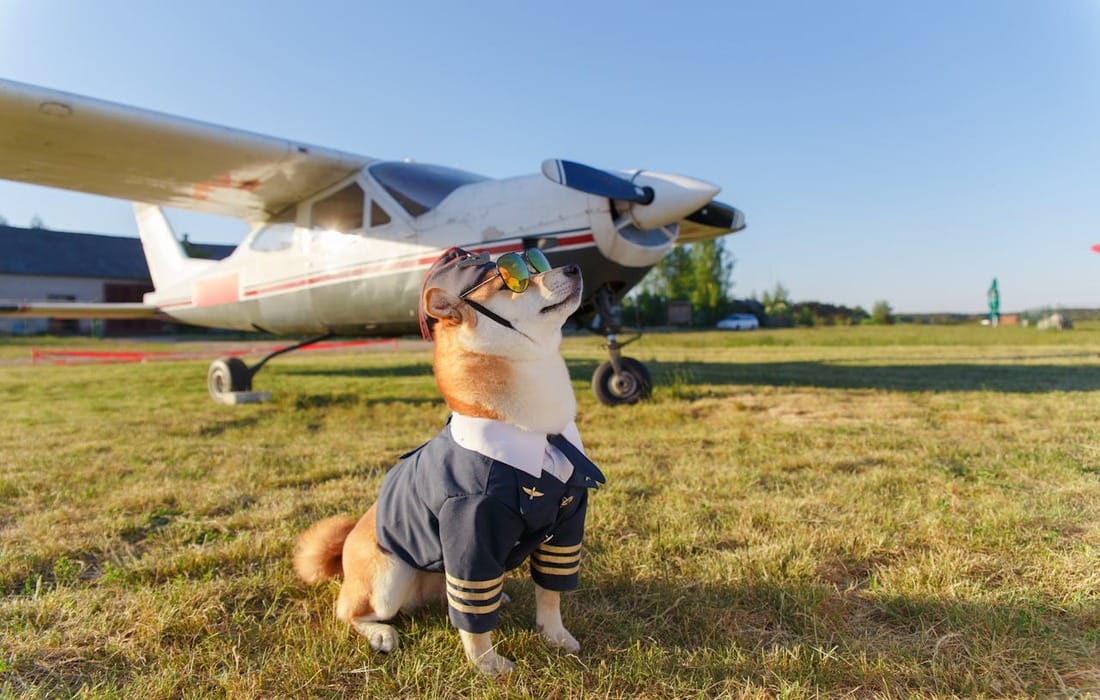If you’re a dog lover planning a trip to Mexico or any other Spanish speaking country you might wonder how to say “dog” in Spanish. The answer is straightforward: it’s “perro.” But knowing just the word isn’t enough, for someone who has lived many years in Soth America I know that understanding the cultural nuances and variations in slang can make all the difference in getting yourself understood. Regional terms like “chucho” in Central America or “sato” in Puerto Rico highlight how language reflects local traditions. In this guide, I’ll break down the basics, explore regional expressions, and even help you pronounce “perro” like a pro.
The Basics: How Do You Say Dog in Spanish?
When it comes to saying “dog” in Spanish, the direct translation is “perro.” But as with many words in Spanish, nuances like grammatical gender and pluralization come into play. Whether you’re chatting with Spanish-speaking dog lovers or simply learning for personal reasons, understanding these basics will deepen your knowledge of the language.
Understanding Gender in Spanish: Perro vs Perra
Unlike English, Spanish assigns gender to nouns, which means the word for “dog” changes depending on whether you’re talking about a male or female dog. A male dog is called a “perro”, while a female dog is referred to as “perra.”
- When to Use “Perro”: Use this masculine form when referring to:
- A male dog.
- A dog whose gender is unknown or irrelevant.
- Mixed-gender groups of dogs (the masculine form is default in such cases).
- When to Use “Perra”: Use this feminine form specifically for female dogs. However, it’s worth noting that context matters here. The word “perra” can carry a negative connotation depending on dialect and context, similar to calling a female dog a “bitch” in English.
Pro Tip: If you’re unsure about a dog’s gender or you want to refer to dogs in general, stick with “perro.” It’s the safer choice, linguistically and socially.
Plural Form: Perros
In Spanish, turning a singular noun into a plural usually involves adding -s or -es to the word, and “perro” is no exception. The plural of “perro” is “perros” when referring to a group of male dogs or a mixed group. For a group made up entirely of female dogs, you would use “perras.”
Let’s break it down with a few common examples:
- Singular:
- El perro (The male dog)
- La perra (The female dog)
- Plural:
- Los perros (The dogs, male or mixed group)
- Las perras (The dogs, female only)
Here’s a handy rule of thumb: if even one male dog is present in a group, use the masculine plural “perros.” This default behavior is consistent across most Spanish nouns. Making these distinctions might feel tricky at first, but with practice, it becomes second nature. Plus, paying attention to gender and plurality will help you sound more natural and confident in conversations.
Different Words for Dog in Spanish


The word “dog” in Spanish may translate to “perro,” but that’s just the tip of the iceberg. Spanish, a language rich in regional expressions and cultural nuances, offers a variety of synonyms, regional terms, and affectionate expressions for our furry friends. By understanding these alternatives, you can connect more naturally with native speakers or simply impress your Spanish-speaking friends at the dog park.
Synonyms: Can, Cachorro, and Sabueso
Spanish offers some alternate terms for “dog,” each with unique connotations:
- Can: This term is more formal and somewhat literary, often used in written language or sophisticated contexts. Think of it like saying “hound” in English. While not common in everyday conversation, you might find it in classical literature or official breed descriptions.
- Cachorro: While “cachorro” literally means “puppy,” it can also refer broadly to baby animals. If someone calls their adult dog “cachorro,” it’s likely out of affection, much like you might refer to a grown dog as your “puppy” in English.
- Sabueso: This translates directly to “hound.” It’s typically used to refer to working dogs, specifically those trained for scent tracking, like bloodhounds. If you’re reading a detective story in Spanish, you might see “sabueso” used figuratively to describe a sleuth keen on tracking clues.
Regional Variants: Sato, Zaguate, Quiltro
Depending on the country, you’ll find creative slang for dogs unique to the culture:
- Sato (Puerto Rico): In Puerto Rican slang, “sato” is commonly used for stray or mixed-breed dogs. It carries a tone of endearment and is often associated with rescue dogs or street dogs that individuals grow fond of. If you walk the beaches in Puerto Rico, you might even run into a “sato” enjoying the sand and sun.
- Zaguate (Costa Rica): Similar to “sato,” “zaguate”[saoate] is Costa Rican slang for stray or mixed-breed dogs. This term captures the Tico love for dogs of all shapes and sizes. Costa Rica even has a sanctuary for these lovable leftovers called “Territorio de Zaguates” (Land of the Mutts), where stray dogs roam freely.
- Quiltro (Chile): In Chile, “quiltro” is a term for mixed-breed or stray dogs. While it’s slang and can sound a bit informal, it highlights the widespread presence of free-roaming dogs in the region, many of which are beloved parts of the community.
Affectionate Terms: Perrito, Cachorrito, and Lomito
Spanish speakers often use affectionate diminutives or playful terms when referring to their furry companions:
- Perrito: Adding “–ito” to “perro” creates a diminutive form, making it mean “little dog.” While literally used for small dogs or puppies, it can also be a term of endearment for dogs of any size. A phrase like “Mi perrito es tan lindo” translates to “My little dog is so cute.”
- Cachorrito: If you thought “cachorro” was affectionate, “cachorrito” turns up the cuteness another notch. This term works great when you’re gushing over a particularly adorable puppy or want to emphasize tenderness.
- Lomito: Popular in Mexico and Latin American countries, “lomito” is an affectionate and playful term derived from “lomo” (back). “Lomito” is often used on social media hashtags accompanying adorable dog pictures (#LomitoFeliz), and it’s a surefire way to make your love for dogs both relatable and trendy.
Pronunciation Tips for Perro


Saying “perro” in Spanish perfectly can feel like a tricky challenge, especially for non-native speakers. But nailing the pronunciation is key if you want to be understood clearly when talking about dogs in Spanish-speaking settings. Here’s how learning to avoid common mistakes and mastering the sounds can make you sound fluent and confident.
Common Pronunciation Mistakes
One of the biggest hurdles English speakers face is distinguishing between saying “perro” (dog) and “pero” (but). At first glance, they seem almost identical, but there’s a subtle and crucial difference that changes the entire meaning of your sentence.
Let’s break it down:
- “Pero” (but): The single “r” here is pronounced as a soft tap, almost like a quick “d” sound when spoken naturally.
- “Perro” (dog): The double “r” requires a rolled or trilled sound, which vibrates in the middle of your tongue. Think of revving an engine but on a smaller scale.
Here’s why this is important: mispronouncing “perro” as “pero” could lead to confusion. Imagine saying, “I like my but” instead of “I like my dog.” It’s a small slip, but it might create an awkward moment in conversation!
How to Practice the Difference
- Start with isolated sounds: Try repeating the soft “r” in “pero” (just tap your tongue against the roof of your mouth gently). Then practice exaggerating the roll in “perro.” pronounced [Peh-ro]
- Repeat tongue twisters: Practice phrases packed with both sounds. For example, “El perro corre rápido pero no hace ruido” (The dog runs fast but doesn’t make noise).
- Slow down: If you’re learning, focus on slowly emphasizing the double roll rather than speaking quickly. Fluency will come with time.
Why Pronunciation Matters
Clear pronunciation isn’t just about getting the words right—it’s about ensuring the listener understands what you mean. Accurate pronunciation is especially critical when visiting Spanish-speaking countries or engaging with native speakers. Here’s why it counts:
- Avoid misunderstandings: Just like with “pero” and “perro,” mispronunciations might cause confusion or even unintentional humor. Many words in Spanish are distinguished only by slight changes in sound, making precision essential.
- Show respect for the language: Correct pronunciation demonstrates effort and cultural appreciation, which Spanish speakers often notice and value.
- Make a great impression: Whether you’re asking for directions or talking to a local at the dog park, clear speech shows confidence and fosters better connections with others.
- Build your confidence: The better you pronounce words, the more willing you’ll feel to join conversations without fear of making mistakes.
If the pronunciation hurdle feels significant, don’t worry—it’s a natural part of learning, and plenty of resources can help. Reading about why pronunciation is vital for communication might inspire you to stay consistent in practicing.
FAQs About Saying Dog in Spanish


When it comes to discussing dogs in Spanish, things can get more nuanced than just saying “perro.” From regional differences to unique slang terms, knowing how to describe dogs or puppies in various contexts can go a long way in making your interactions more authentic. Below, I’ve broken down some of the most frequently asked questions about saying “dog” in Spanish.
Is ‘Perro’ Used for All Types of Dogs?
Yes, “perro” is widely used as the standard term for “dog” across all Spanish-speaking countries. Whether you’re talking about a Chihuahua or a Great Dane, “perro” is the go-to word. That said, it’s not the only word you’ll hear. Some people may use more specific terms depending on a dog’s breed, size, or even their personal relationship with the dog.
For example:
- If you’re referring to a beloved pet dog, you might hear “perrito” as an affectionate diminutive.
- In literary or formal texts, the word “can” might appear, though it’s less common in casual speech.
Regional slang also comes into play (more on that later), but “perro” remains the most universal and widely understood term. Want to explore when to use “perro” versus other options? Check out this guide to Spanish dog terms.
What Is the Difference Between ‘Cachorro’ and ‘Perro’?
The difference lies in age and context. While “perro” refers to a dog of any age, “cachorro” specifically means a young dog or puppy.
Here’s how you can use these terms:
- “Perro” (adult dog): Use it for dogs that are fully grown or when you’re unsure of their age.
- “Cachorro” (puppy): Use it when referring to very young dogs, typically under one year old. The term can also be applied affectionately, like calling an older dog “puppy” in English.
Remember, in some regions, “cachorro” has broader use. It can refer to the young of other animals as well, such as lions or bears, so context is important. Need further clarification? Here’s a helpful breakdown of these terms on SpanishDict.
How do Puerto Ricans say “dog”?
In Puerto Rico, the word “sato” is commonly used to refer to dogs, particularly stray or mixed-breed dogs. While it might seem like slang, “sato” carries an endearing tone and reflects Puerto Rican culture’s relationship with street dogs. For example:
- A rescued dog from Puerto Rico would often be lovingly referred to as a “sato,” even if it’s adopted elsewhere.
If you’re spending time in Puerto Rico, using this term can connect you to locals and shows you understand their unique lingo. Want a deeper look into how Puerto Ricans talk about dogs? Visit this article on regional Spanish expressions.
What is the Mexican slang for dog?
In Mexico, “firulais” is a popular slang term for dog. While it started as a lighthearted or even humorous nickname for dogs, it’s now affectionately used for nearly any dog. For example:
- If you hear someone say, “Mira ese firulais,” they’re probably commenting on a stray or a neighborhood dog in a playful way.
- The term is more informal, so it’s best saved for casual occasions or among friends.
Another slang term you might hear is “lomito,” which is also popular on platforms like social media to describe dogs in an endearing way.
How do you say puppy in Spanish slang?
For puppies, Spanish speakers often use variations like “perrito” or “cachorrito.” While both words imply youth, they also double as affectionate nicknames for any beloved dog, regardless of age or size:
- “Perrito”: Literally translates to “little dog,” but it’s commonly used to mean “puppy.” It’s widespread and understood throughout the Spanish-speaking world.
- “Cachorrito”: A cuter, more loving spin on “cachorro.” It’s like saying “adorable little puppy.”
In some regions, playful nicknames like “chuchito” (a diminutive of “chucho”) could also be used to describe dogs in a lighthearted way. Understanding these nuances doesn’t just help you learn Spanish; it strengthens the bond you share with other dog lovers. Whether you’re in Puerto Rico calling a stray “sato,” or in Mexico affectionately referring to a “firulais,” these terms go beyond words—they’re part of the culture of relationships with dogs.
Wrapping Up
Learning how to say dog in Spanish goes beyond just the word “perro”; it’s about understanding the cultural and linguistic diversity behind the language. From affectionate terms like “lomito” to regional slang such as “sato” or “zaguate,” your Spanish vocabulary can reflect the deep connection we share with our furry companions.
As a dog owner or language learner, mastering these terms not only helps you communicate effectively but also deepens your appreciation for the culture. Whether you’re walking through Mexico beaches or chatting with Latin friends, knowing the right word makes the conversation more meaningful.
Ready to practice? Try using these words in conversations with fellow dog owners, practice pronunciation, or even learn a new term from a Spanish-speaking friend. How will you start integrating “perro” into your Spanish-speaking moments?













